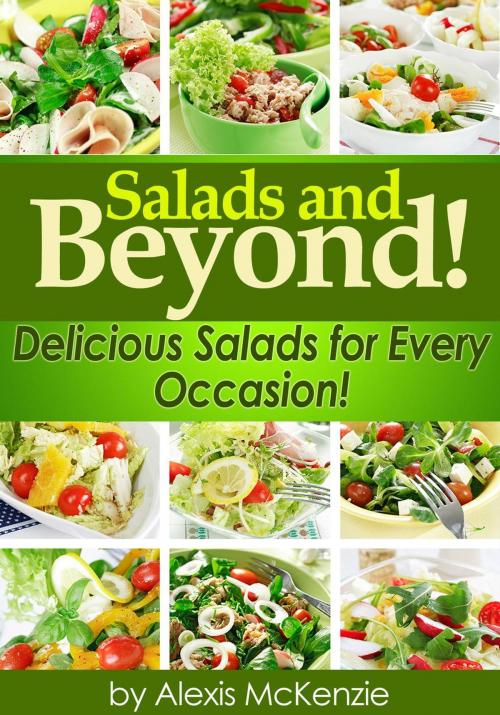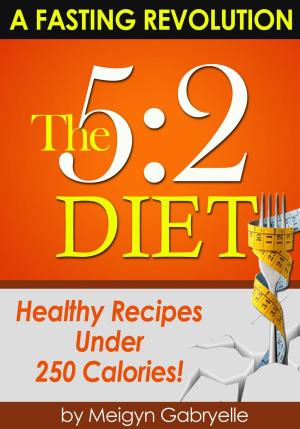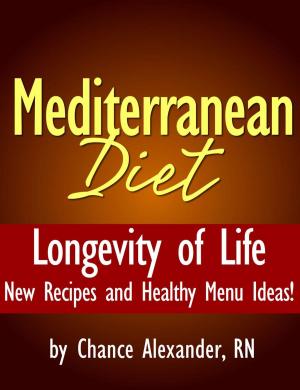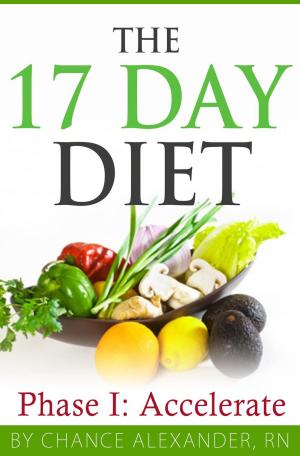Salads and Beyond: Delicious Salads for Every Occasion!
Nonfiction, Food & Drink, Entertaining, Appetizers, Vegetables & Salads| Author: | Alexis McKenzie | ISBN: | 9781386558620 |
| Publisher: | Clifford McDuffy | Publication: | February 3, 2017 |
| Imprint: | Language: | English |
| Author: | Alexis McKenzie |
| ISBN: | 9781386558620 |
| Publisher: | Clifford McDuffy |
| Publication: | February 3, 2017 |
| Imprint: | |
| Language: | English |
When we hear the word “salad,” we automatically think of something green and leafy with a few extra tidbits on top and drizzled with a dressing of some sort. But, salads are much more than that; they come in all flavors, with a variety of ingredients and for any meal of the day.
Salads are considered one of the most versatile dishes to ever grace a table. The recipes you will find in this Salads Report prove the wide-range of uses and nutritional variances. It can be said that there is a salad for every occasion, and this report provides that diversity.
Try a salad alone or as a side-dish to an already scrumptious meal. Serve one at your next potluck dinner and listen to the raves of the guests. You can even offer a salad as a dessert.
Surprised? Don’t be. We’ve collected thirty-two of our favorites here on these pages and divided them into categories to help you select the perfect one to prepare.
The word “salad” comes from ancient times when the Romans and Greeks first adopted the culinary process of mixing green, leafy vegetables with other ingredients and covering it with dressing. “Salad” originates from the Latin word “sal,” which means “salt.” From that base, “salata,” meaning “salted things,” became the name. Over the centuries, the salad has acquired many different names, but they all mean the same thing - a collection of ingredients, usually served raw or with little cooking, offered with a flavored dressing of some sort.
There are many definitions around the world for what can be considered a salad or how a salad is used as part of a meal. Conventional thought is that a salad is made with an assortment of ingredients tossed together or layered, served wet or dry, warm, chilled or at room temperature. For this most part, this description does define a salad, but in today’s health-conscious world, the meaning of “salad” has broadened. Ingredients are more varied and better geared toward nutrition; recipes have become more inclusive of new ingredients and the salad is often considered a meal by itself. The salad is no longer just a prelude to a meal.
Nutritionist concur that there are four important reasons for us to eat salads. They are:
For the fiber. Our bodies do not digest fiber, but it is still very useful to a healthy diet because it lowers cholesterol, cleans the digestive tract and acts as an appetite suppressant to help us eat less and lose weight.
For the fruits and vegetables. For years, nutritionists have lauded the benefits of including more fruits and vegetables in our diets. Not only are the instrumental in helping to ward off many diseases, fruits and vegetables contain powerful antioxidants that protect our bodies from the damage caused by free radicals (harmful molecules).
For fewer calories and more satisfaction. Eating a low-calorie salad at the beginning of a meal enhances satiety (feeling full), which in turn reduces the number of calories a person might eat. Having a higher-calorie salad as a main course renders the same outcome.
For the smart fats. Monounsaturated fats are good fats which are generally found in dressings and many vegetables. When dressings include healthy oils, such as olive, these fats help the body to absorb more nutrients from the vegetables and fruits in the salad.
Over and above these four reasons to eat salads, they are easy to prepare, very diverse and offer many alternatives for side dishes and entrees. Salads, in many ways, can be considered a “perfect food.”
Pick up your copy today... Enjoy!
When we hear the word “salad,” we automatically think of something green and leafy with a few extra tidbits on top and drizzled with a dressing of some sort. But, salads are much more than that; they come in all flavors, with a variety of ingredients and for any meal of the day.
Salads are considered one of the most versatile dishes to ever grace a table. The recipes you will find in this Salads Report prove the wide-range of uses and nutritional variances. It can be said that there is a salad for every occasion, and this report provides that diversity.
Try a salad alone or as a side-dish to an already scrumptious meal. Serve one at your next potluck dinner and listen to the raves of the guests. You can even offer a salad as a dessert.
Surprised? Don’t be. We’ve collected thirty-two of our favorites here on these pages and divided them into categories to help you select the perfect one to prepare.
The word “salad” comes from ancient times when the Romans and Greeks first adopted the culinary process of mixing green, leafy vegetables with other ingredients and covering it with dressing. “Salad” originates from the Latin word “sal,” which means “salt.” From that base, “salata,” meaning “salted things,” became the name. Over the centuries, the salad has acquired many different names, but they all mean the same thing - a collection of ingredients, usually served raw or with little cooking, offered with a flavored dressing of some sort.
There are many definitions around the world for what can be considered a salad or how a salad is used as part of a meal. Conventional thought is that a salad is made with an assortment of ingredients tossed together or layered, served wet or dry, warm, chilled or at room temperature. For this most part, this description does define a salad, but in today’s health-conscious world, the meaning of “salad” has broadened. Ingredients are more varied and better geared toward nutrition; recipes have become more inclusive of new ingredients and the salad is often considered a meal by itself. The salad is no longer just a prelude to a meal.
Nutritionist concur that there are four important reasons for us to eat salads. They are:
For the fiber. Our bodies do not digest fiber, but it is still very useful to a healthy diet because it lowers cholesterol, cleans the digestive tract and acts as an appetite suppressant to help us eat less and lose weight.
For the fruits and vegetables. For years, nutritionists have lauded the benefits of including more fruits and vegetables in our diets. Not only are the instrumental in helping to ward off many diseases, fruits and vegetables contain powerful antioxidants that protect our bodies from the damage caused by free radicals (harmful molecules).
For fewer calories and more satisfaction. Eating a low-calorie salad at the beginning of a meal enhances satiety (feeling full), which in turn reduces the number of calories a person might eat. Having a higher-calorie salad as a main course renders the same outcome.
For the smart fats. Monounsaturated fats are good fats which are generally found in dressings and many vegetables. When dressings include healthy oils, such as olive, these fats help the body to absorb more nutrients from the vegetables and fruits in the salad.
Over and above these four reasons to eat salads, they are easy to prepare, very diverse and offer many alternatives for side dishes and entrees. Salads, in many ways, can be considered a “perfect food.”
Pick up your copy today... Enjoy!















